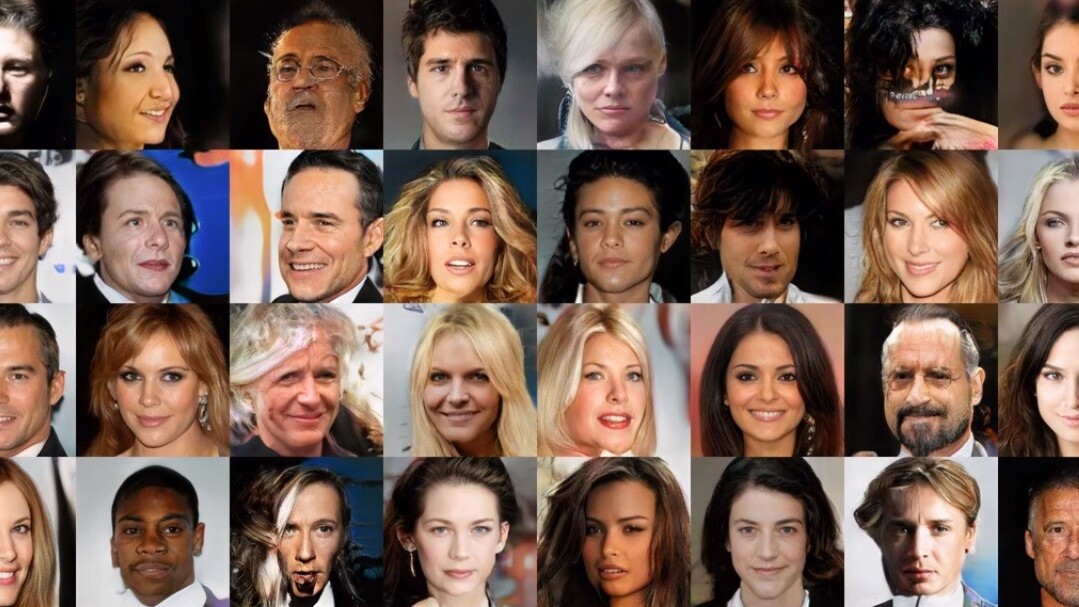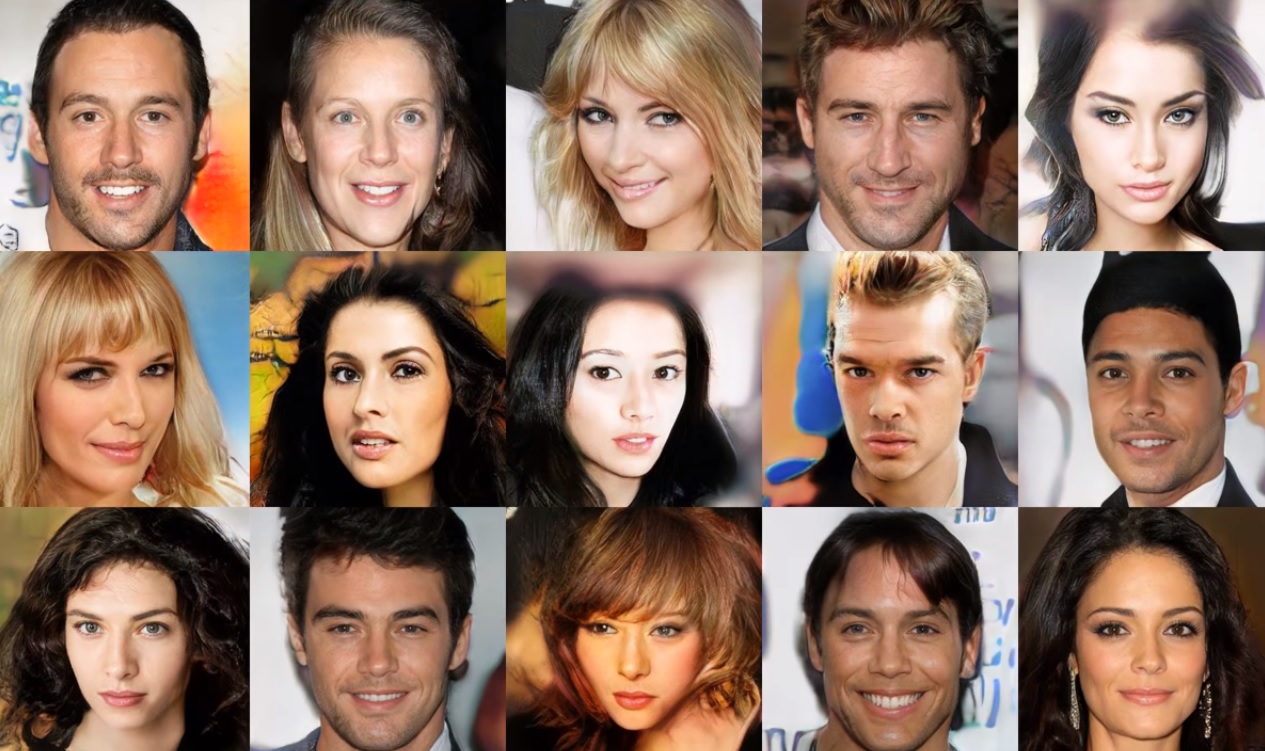
Nvidia yesterday revealed an AI capable of producing photograph-quality images of people who don’t exist. The next time you click on an attractive profile pic you might be admiring the fictional creation of a clever computer.
Alan Turing, we need you now more than ever.
The researchers built a global adversarial network (GAN) to pit two AI systems against one another in a quest to produce high quality “photographs” of fake people. Machines, rather than fight to the death, split the work into “creating images” and “judging images,” in order to fine-tune the results.
Scientists fed the AI images of actual celebrities to get it started, from there it practiced on gradually increasing resolutions until it was able to produce fairly realistic pics. There are some problems with the images, a keen-eye will notice several flaws and an expert will easily dismiss them.

But your average person might not be paying attention when the images are out of context. It’s easy to imagine one of the above images clipped and used for someone’s profile.
Machines understand us more every day — perhaps not collectively — but the technology is burgeoning. Our smart speakers can identify our voices in a sea of noise thanks to advances in AI’s ability to listen. We’ve given computers vision akin to our own, and in doing so we’ve rendered reCAPTCHA an ineffective determinant of humanity.
Developers have taught AI to mimic our voices, animate our faces in speech, and turn flat pictures into 3D images. They’re building a person, one piece at a time, like a collective Dr. Frankenstein whose monster manifests in the projects of a thousand curious programmers.
It no longer matters whether AI can fool everyone; the important thing to understand at this juncture is that it’s become good enough to fool some of us.
We’re likely decades away from seeing diminishing returns in the field of AI, even the most pessimistic observer can concede we’re laying the very early groundwork in the field. It follows that in a year, or ten, computers will become much better at mimicking us.
If imitation truly is the sincerest form of flattery we can expect some very complimentary robot overlords in the future.
As the artificially intelligent titular character from the 2002 movie “S1MONE” said:
I am the death of real.
Get the TNW newsletter
Get the most important tech news in your inbox each week.




